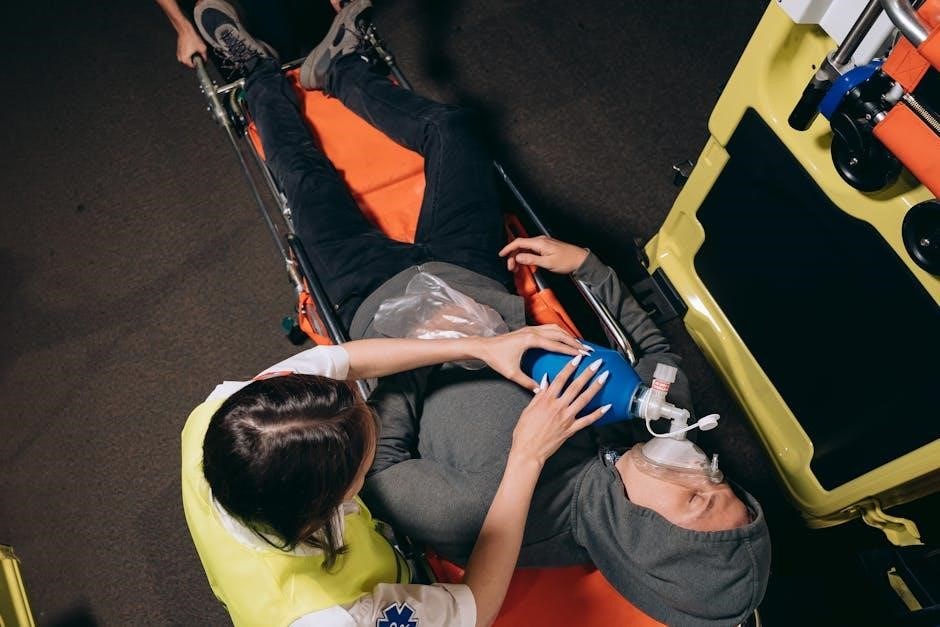This manual provides essential training in first aid, CPR, and AED use, empowering participants to respond confidently in emergencies. Developed by the American Red Cross, it serves as a comprehensive guide for life-saving techniques, ensuring preparedness and effective care.
1.1 Overview of the Manual
The First Aid CPR AED Participants Manual provides a structured approach to learning essential emergency care skills. It covers recognition of emergencies, cardiac arrest response, AED use, CPR techniques, injury management, and environmental emergencies. The manual is part of the American Red Cross training program, designed for participants seeking certification in first aid, CPR, and AED use. It serves as a practical guide, emphasizing hands-on training and real-world application to ensure effective emergency response.
1.2 Purpose of the Manual
The purpose of the First Aid CPR AED Participants Manual is to equip participants with the knowledge and skills to respond to emergencies confidently. It focuses on teaching proper techniques for first aid, CPR, and AED use, ensuring participants can provide immediate care in critical situations. The manual aligns with the American Red Cross standards, aiming to prepare individuals to save lives and reduce injury severity through timely and effective interventions.
1.3 Target Audience
The First Aid CPR AED Participants Manual is designed for individuals seeking to learn life-saving skills. It caters to healthcare professionals, workplace responders, and community members. The manual is ideal for those requiring certification, such as employees, educators, and caregivers. It also serves as a valuable resource for anyone wanting to gain confidence in emergency response. Whether you’re a novice or refreshing your skills, this guide provides the necessary knowledge to act effectively in critical situations.
1.4 Key Features of the Manual
The First Aid CPR AED Participants Manual offers clear, step-by-step instructions with visual aids like diagrams and flowcharts. It includes practical scenarios, legal considerations, and the latest scientific guidelines. The manual emphasizes hands-on training and real-world application, ensuring learners are well-prepared. Additional features include quick-reference guides, emergency action steps, and post-incident procedures. This comprehensive resource is designed to enhance learning and retention, making it an indispensable tool for emergency readiness.
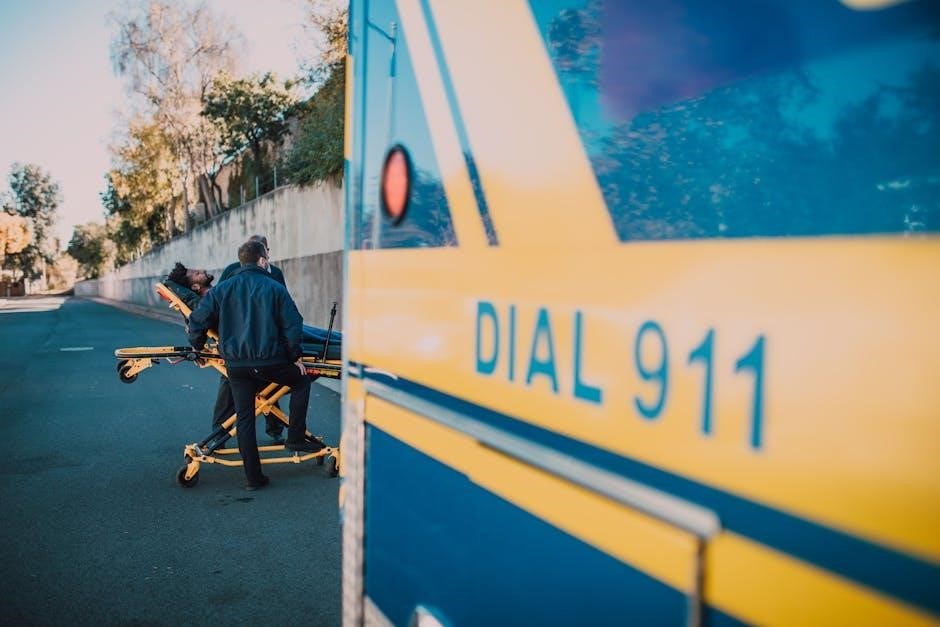
Understanding Basic First Aid
Mastering basic first aid involves recognizing emergencies, assessing scenes safely, and providing care. It includes wound management, injury stabilization, and using personal protective equipment to ensure safety.
2.1 First Aid Fundamentals
First aid fundamentals emphasize immediate care for injuries or illnesses to prevent worsening. Key principles include assessing the scene, ensuring personal safety, and providing interventions like wound cleaning and bleeding control. Proper techniques, such as using dressings and applying pressure, are crucial. Understanding these basics ensures effective response and minimizes risks, promoting recovery and stability until professional help arrives, as outlined in the American Red Cross manual.
2.2 Scene Safety and Assessment
Scene safety and assessment are critical first steps in any emergency. Always survey the area for potential hazards, ensuring both rescuer and patient safety. Use personal protective equipment (PPE) when necessary. Check for hazards like broken glass or fire before approaching. Once the scene is deemed safe, assess the situation to identify the number of patients and the nature of injuries or illnesses. This step ensures a coordinated and effective response, as outlined in the American Red Cross manual.
2.3 Personal Protective Equipment (PPE)
Personal Protective Equipment (PPE) is essential for safeguarding rescuers and patients from potential biohazards. Common PPE includes gloves, masks, and eye protection. Always wear gloves when in contact with blood, bodily fluids, or open wounds. Masks with filters are recommended during CPR to reduce the risk of airborne pathogen transmission. Properly removing and disposing of PPE after use minimizes contamination risks. The American Red Cross emphasizes that PPE is a critical component of infection control in first aid situations. Always prioritize PPE use to ensure safety for both rescuers and patients.
2;4 Legal Considerations in First Aid
Understanding legal considerations is crucial for first aid providers. Good Samaritan laws protect rescuers from liability when acting in good faith. Duty to act applies to trained individuals in emergencies. Always follow established protocols to avoid legal issues. Obtain verbal consent before providing care, except in life-threatening situations where consent is implied. Be aware of privacy laws and minimize exposure of sensitive patient information. Legal awareness ensures ethical and responsible first aid delivery while protecting both rescuers and patients. Stay informed on local regulations and updates.
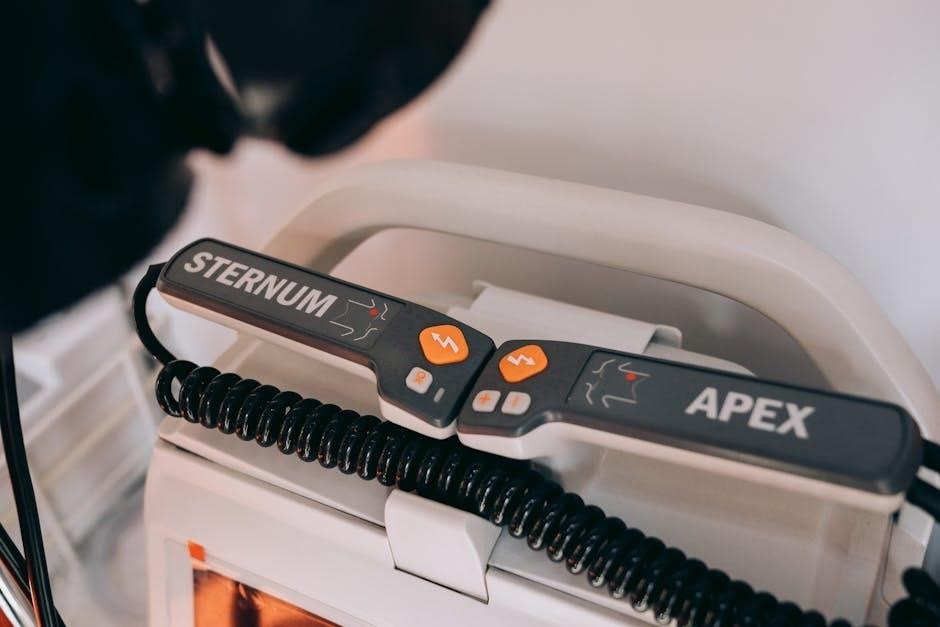
Emergency Action Plan
The Emergency Action Plan outlines systematic steps to assess scenes, evaluate patients, and execute emergency responses effectively, ensuring timely and appropriate care during critical situations.
3.1 Assessing the Scene
Assessing the scene involves ensuring safety, identifying hazards, and securing the area before providing care. This step is critical to prevent further harm to both the responder and the patient. The process includes evaluating the environment for potential dangers, such as broken glass or unstable structures, and taking steps to mitigate risks. Proper scene assessment also involves quickly determining the number of individuals involved and the nature of the emergency to prioritize care effectively. Stay calm and act methodically to ensure a safe and efficient response.
3.2 Patient Assessment
Patient assessment begins with checking responsiveness by asking questions or tapping gently. Ensure the scene is safe before approaching. Look for visible injuries or conditions, such as bleeding or difficulty breathing. Check the airway, breathing, and circulation (ABCs) to identify life-threatening issues. Use gloves for protection and assess the patient’s level of consciousness. Determine the chief complaint and gather information about what happened. This systematic approach helps prioritize care and ensures timely intervention for critical conditions. Stay calm and methodical during the assessment process.
3.3 The Emergency Action Steps
The emergency action steps involve ensuring scene safety, assessing the patient, and providing appropriate care. Call 911 or alert others if the situation is life-threatening. Check responsiveness by asking questions or tapping gently. Provide care based on training, such as CPR or using an AED if needed. Stay with the patient until professional help arrives and be prepared to provide information to responders. These steps ensure a structured and effective response to emergencies.

Cardiac Emergencies
This section covers recognizing cardiac arrest, using an AED, and performing CPR. It emphasizes timely intervention to restore blood circulation and prevent tissue damage.
4.1 Recognizing Cardiac Arrest
Cardiac arrest occurs when the heart suddenly stops beating, leading to loss of consciousness and absence of breathing or abnormal breathing. Key signs include unresponsiveness, no pulse, and not breathing normally. Immediate recognition is critical to save lives. Call 911 or your local emergency number and start CPR if trained. Use an AED if available. Early intervention significantly improves survival rates and outcomes for cardiac arrest victims.
4.2 Automated External Defibrillator (AED) Use
Using an AED is critical in cardiac arrest situations to restore a normal heartbeat. Ensure the scene is safe, turn on the device, and follow voice prompts. Attach pads to the victim’s bare chest as directed, stand clear, and deliver a shock if advised. Do not touch the person during the shock. If no shock is needed, begin CPR. AEDs analyze heart rhythms and provide clear instructions, making them user-friendly for rescuers.
4.3 CPR Techniques for Adults
Adult CPR involves chest compressions and rescue breaths to maintain blood circulation and oxygenation. Position the person on their back, place the heel of one hand on the center of their chest, and the other hand on top. Push to a depth of 2-3 inches at a rate of 100-120 compressions per minute. Allow the chest to fully recoil between compressions. If trained, give two breaths after every 30 compressions, ensuring the airway is open and breaths are visible.
4.4 CPR Techniques for Children and Infants
CPR for children and infants differs from adult CPR due to their smaller body size. For children (1 year to puberty), use one or both hands for chest compressions, depending on the child’s size. Compress to 1/3 of the chest depth at 100-120 BPM. For infants (0-12 months), use the two-finger technique or the heel of one hand. Provide 30 compressions followed by two breaths. Ensure the airway is open by tilting the head and lifting the chin. If trained, use an AED with pediatric pads.
4.5 Choking Relief Techniques
Choking relief techniques vary by age and circumstances. For adults and children, the abdominal thrusts are recommended. Stand behind the person, wrap your arms around their waist, and perform quick upward thrusts. For infants, use a seated position and back blows. If the person becomes unresponsive, begin CPR. If trained, use an AED. Always prioritize airway clearance and seek medical help immediately. Proper training ensures effective intervention.

Injury Management
This section covers essential techniques for managing injuries, including bleeding control, burn care, fracture stabilization, and head injury assessment. Proper wound care prevents infection and promotes healing;
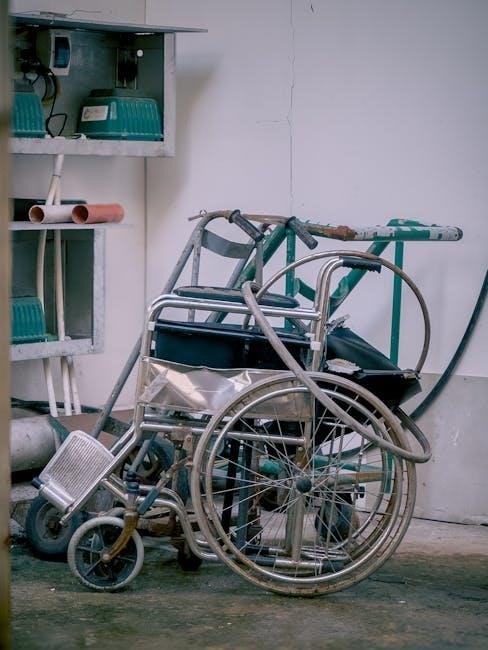
5.1 Bleeding Control
Bleeding control involves immediate actions to stop blood loss. Apply direct pressure with a clean cloth or bandage. If bleeding persists, use a tourniquet between the wound and the heart. Elevate the injured limb above heart level to reduce blood flow. Avoid removing any embedded objects; stabilize them in place. Use hemostatic agents if available. These techniques are essential for preventing shock and promoting wound healing. Proper bleeding control is a critical first aid skill in emergency situations.
5.2 Burn Care
Immediate action is crucial in managing burns. Stop the burning process by removing heat sources and cooling the burn with cool water for 10-15 minutes. Assess the burn’s depth and size to determine severity. Cover the burn with a sterile, non-stick dressing to protect it from infection. Avoid breaking blisters and never apply ice or harmful substances. For severe burns, seek professional medical help promptly to prevent complications. Proper burn care helps reduce scarring and promotes healing.
5.3 Fracture and Sprain Management
For fractures, immobilize the affected limb using a splint or sling to prevent further injury. Apply ice to reduce swelling and pain. Do not attempt to move or straighten the limb. For sprains, follow the RICE method: Rest, Ice, Compression, and Elevation. Monitor for signs of complications, such as numbness or discoloration. Seek immediate medical attention if the injury is severe or if deformity is present. Proper care ensures faster recovery and prevents long-term damage.
5.4 Head Injury Care
Assess the head injury by checking for bleeding, swelling, or loss of consciousness. Immobilize the head and neck manually to prevent further damage. Monitor for signs of concussion, such as dizziness or confusion. Do not administer pain medication. If the person is unresponsive or shows severe symptoms, call for emergency medical help immediately. Minor injuries may be treated with ice, but always seek professional evaluation to rule out serious complications like skull fractures or internal bleeding.
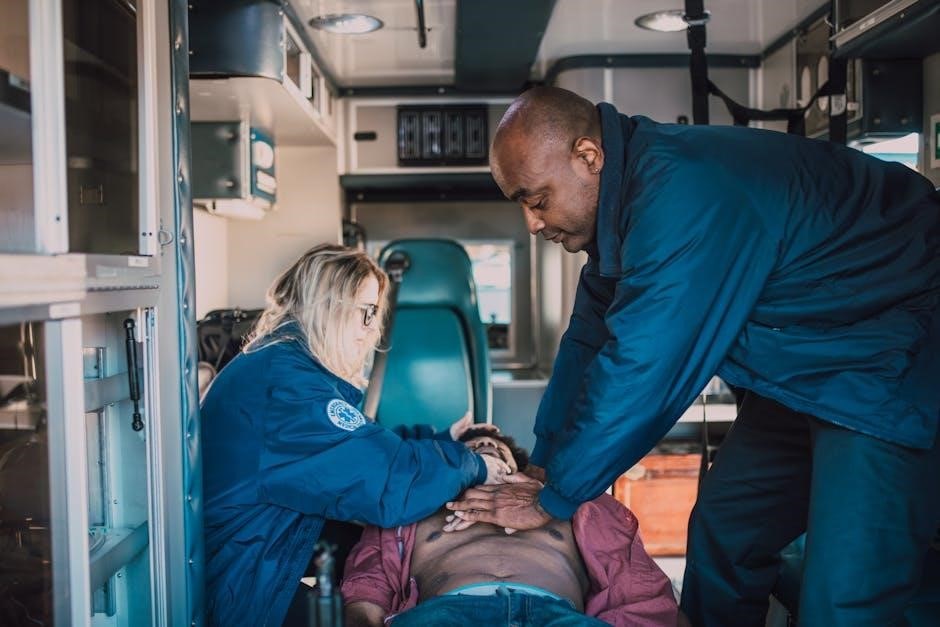
Medical Emergencies
This section covers recognition and response to medical emergencies, including allergic reactions, seizures, and diabetic crises. Emphasizes assessment, initial care, and seeking professional help promptly to ensure optimal outcomes.
6.1 Allergic Reactions and Anaphylaxis
Allergic reactions range from mild symptoms like hives to life-threatening anaphylaxis. Recognize signs such as difficulty breathing, rapid heartbeat, and swelling. Administer epinephrine via an auto-injector if available, and call emergency services immediately. Provide reassurance and maintain the person in a comfortable position until help arrives. This section emphasizes prompt action to prevent severe complications and ensure proper care.
6.2 Seizure Response
During a seizure, ensure the person’s safety by clearing the area of harmful objects. Gently turn them onto their side to maintain an open airway. Do not restrain or place objects in their mouth. After the seizure, provide comfort and reassurance. If the seizure lasts longer than five minutes or the person shows signs of distress, seek immediate medical help. Stay calm and monitor their condition until they fully recover or professional assistance arrives.
6.3 Stroke Recognition and Response
Recognize stroke symptoms like sudden weakness, confusion, or difficulty speaking. Use the FAST acronym: Face (ask to smile), Arms (raise both), Speech (repeat a phrase), and Time (call for help immediately). If symptoms occur, do not move the person unnecessarily. Keep them calm and comfortable. Do not give anything to eat or drink. Call emergency services promptly, as timely medical intervention is critical for improving outcomes. Stay with the person until professional help arrives.
6.4 Diabetic Emergencies
Diabetic emergencies, such as hypoglycemia (low blood sugar) and hyperglycemia (high blood sugar), require immediate attention. For hypoglycemia, administer fast-acting carbohydrates like glucose tablets or juice if the person is conscious. If unconscious, do not give anything by mouth and call emergency services. For hyperglycemia, ensure the person stays hydrated and seek medical help promptly. Always follow the person’s emergency plan and stay with them until professional care arrives. Quick action can prevent serious complications.
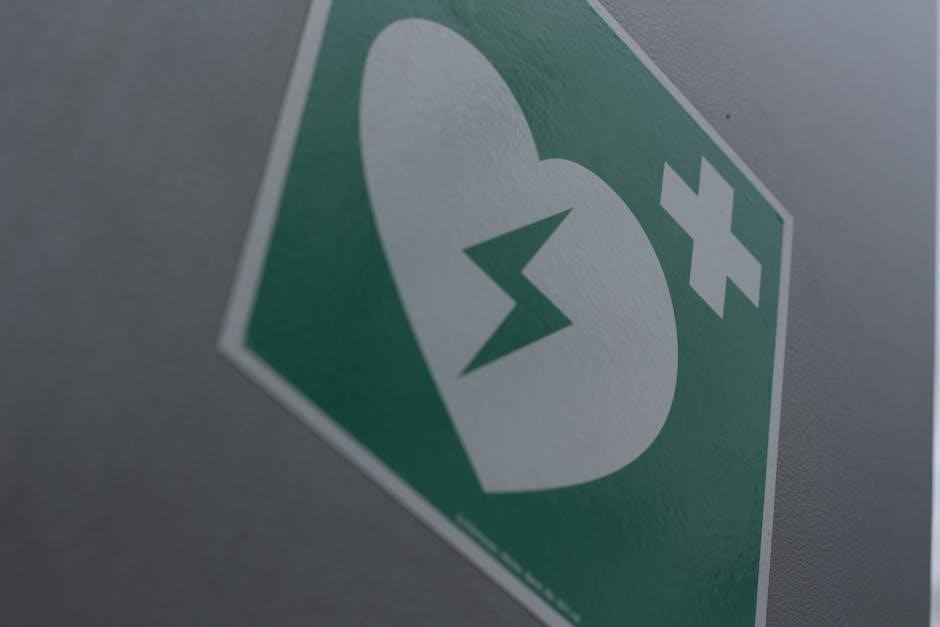
Environmental Emergencies
This section covers responses to heat-related illnesses, cold exposure, and drowning incidents. It emphasizes immediate care, prevention of further harm, and prompt professional medical intervention when needed.
7.1 Heat-Related Illnesses
Heat-related illnesses, such as heat exhaustion and heat stroke, occur when the body overheats. Symptoms include heavy sweating, dizziness, nausea, and high body temperature. Immediate care involves moving the person to a cooler place, removing excess clothing, and applying cool, wet cloths. Hydration with cool water is essential. Severe cases, like heat stroke, require urgent medical attention. Recognizing early signs and taking prompt action is critical to preventing complications and ensuring recovery.
7.2 Cold-Related Illnesses
Cold-related illnesses, such as hypothermia and frostbite, occur when the body loses heat faster than it can produce it. Symptoms include shivering, confusion, numbness, and pale skin. Immediate care involves moving the person to a warm environment, removing wet clothing, and using blankets to rewarm. For frostbite, soak affected areas in warm water (not hot) and avoid direct heat. Recognizing early signs and providing prompt care is crucial to preventing long-term damage and ensuring recovery.
7.3 Drowning and Submersion Incidents
Drowning occurs when a person is unable to breathe due to submersion in water, leading to asphyxiation. Symptoms include difficulty breathing, coughing, and loss of consciousness. Immediate first aid involves removing the person from water, checking for breathing and pulse, and starting CPR if necessary. Keep the person calm, warm, and in a recovery position. Even if the person regains consciousness, seek medical attention to monitor for delayed complications like pneumonia or brain damage. Prompt intervention is critical for improving outcomes.
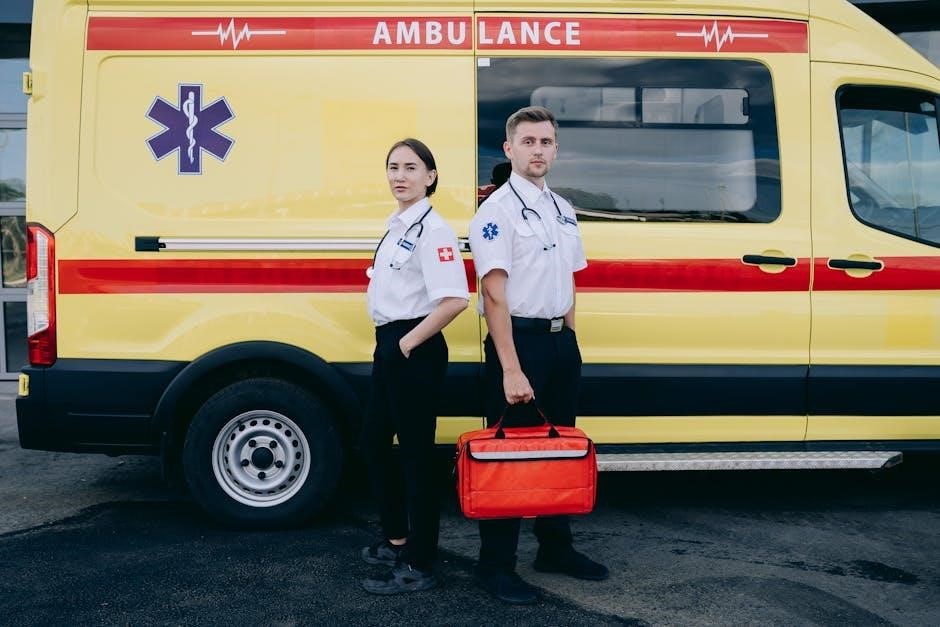
Final Steps in Emergency Care
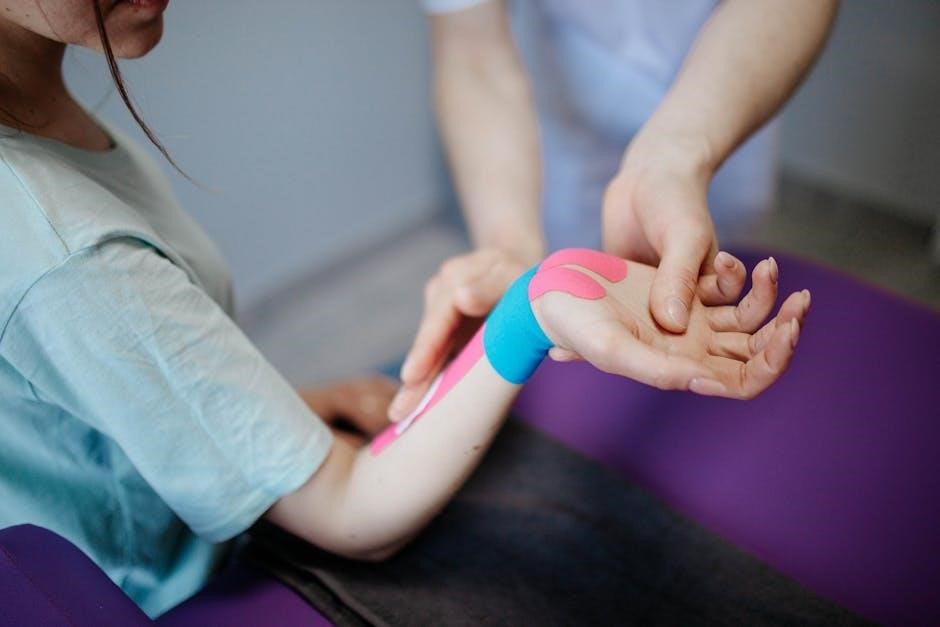
Stabilize the patient, prepare for transport, and ensure post-emergency procedures are followed. This includes securing the scene, documenting actions, and providing ongoing care until professional help arrives.
8.1 Stabilizing the Patient
Stabilizing the patient involves preventing further injury and maintaining their current condition. This includes immobilizing the head and neck manually, especially in suspected spinal injuries, and ensuring the patient is comfortable. Monitor vital signs and be prepared to provide ongoing care until advanced medical help arrives. Proper stabilization helps prevent worsening of injuries and prepares the patient for safe transport to a medical facility. Always follow the emergency action plan and use available resources effectively to ensure the patient’s safety and well-being.
8.2 Preparing for Transport
Preparing for transport involves ensuring the patient is stable and ready for movement. Use a backboard or stretcher if spinal injury is suspected, securing the patient firmly. Gather personal belongings and emergency contact information. Ensure the patient’s airway, breathing, and circulation are maintained during transport. Provide clear documentation of the patient’s condition and care provided to medical personnel; This step ensures a smooth transition to advanced care and minimizes risks during movement.
8.3 Post-Emergency Procedures
After stabilizing the patient, document all care provided, including interventions and the patient’s response. Report any exposure to bodily fluids to supervisors. Ensure equipment is cleaned and restocked. Provide emotional support to the patient and bystanders. Follow up with medical personnel to share critical information. Maintain confidentiality and review the incident for future improvements. Proper post-emergency procedures ensure continuity of care and readiness for future emergencies.
This manual empowers individuals with essential first aid, CPR, and AED skills, fostering confidence in emergency response. Continuous practice and knowledge refreshers are crucial for saving lives effectively.
9.1 Summary of Key Concepts
The manual emphasizes recognizing emergencies, assessing scenes, and applying first aid, CPR, and AED techniques. It covers cardiac arrest response, bleeding control, and legal considerations, ensuring comprehensive preparedness. Key concepts include prompt action, proper equipment use, and continuous skill refreshers to save lives effectively in various emergency situations.
9.2 Importance of Preparedness
Preparedness is crucial for effectively responding to emergencies, saving lives, and reducing injury severity. It fosters confidence, minimizes panic, and ensures timely interventions. By understanding first aid, CPR, and AED use, individuals can act decisively, preventing situations from worsening. Preparedness also promotes a culture of safety and responsibility, empowering everyone to contribute to community well-being. Regular training and skill refreshers are essential to maintain readiness and adapt to evolving emergency care standards.
9.3 Encouragement to Practice and Refresh Skills
Regular practice and skill refreshers are vital to maintaining proficiency in first aid, CPR, and AED use. Hands-on training reinforces techniques, ensuring confidence in high-stress situations. Participants are encouraged to revisit materials annually and engage in simulation exercises to refine their abilities. Staying updated with the latest guidelines empowers individuals to provide effective care and adapt to new emergency response standards. Continuous learning fosters a proactive approach to saving lives and enhancing community safety.
